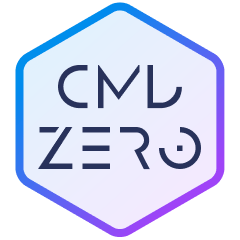Most ads aren’t reaching your attention by happenstance, as anyone who has ever seen an ad for a product they were just talking about knows. For this, we can thank the innocuously-named cookie, a small text file that holds the memory of a user and their past actions, including visited webpages, location settings, and log-in information. Invented by Netscape way back in 1992, cookies have quickly become the backbone of how marketers get the right ads in front of the right people at the right time to maximize conversion.
Over the past few years, regulations such as GDPR in the EU and CCPA in the US have called for greater stringency around consumer data protection and privacy, leading to a deprecation of cookies and user tracking. The web now faces a similar fate. Safari and Firefox have already blocked all third-party cookies, and Google has announced plans to disable cookies on Chrome by 2024. Marketers are now being confronted with a new reality, where the data they have relied on for decades in deploying trillions of dollars is rapidly going extinct.
This paradigm shift around cookies, coupled with an increased emphasis on sustainable growth, has placed greater scrutiny on spend allocation, with fundamental questions on how best to do that left unanswered:
- How incrementally impactful is each channel in my mix?
- At what spend level do we reach diminishing returns?
- Is there incremental value in retargeting?
- Are discounts and promotional offers truly ROI-positive?
- Which customers need a discount to purchase incrementally?
Marketers are facing more pressure than ever to quantify and “prove” the answers to these fundamental questions. As investors, we at Insight see this firsthand. Insight’s D2C and marketplace businesses are keenly focused on these questions at both operational and board reporting levels. We’ve seen that traditional quantification involves a combination of CDP analytics, Google / Facebook ad-platform native analytics, and revenue attribution through cookie-proxies such as pixels. Yet, these methods are hard to maintain, produce “black box” results, and are becoming much less effective in this new post-cookie world.
To compensate, many consumer brands either rely on sizable internal data teams or pay high prices for outsourced marketing analytics services. These methods have largely proven to be static and expensive guesswork. With millions of dollars of spend on the line, brands are struggling to find the right solution to this extremely complex and challenging problem. We’ve taken part in countless boardroom conversations where this issue has been very high priority.
Enter Haus – a category-creating experimentation platform that democratizes frontier scientific methods and empowers marketers to understand the value of their spend. Instead of relying on cookies to target individual users, Haus configures experiments with the statistical tools and controls that enable marketers to model out the “incrementality curve” of their spend in any permutation of channel and geography – i.e., how much each incremental dollar will generate in returns. Armed with this data, executives can answer key business questions and make informed investment decisions.
When we first heard this pitch, we had our fair share of skepticism that Haus had cracked the code on privacy-centric experimentation. Through the lens of our D2C investments, it was obvious to us that this could be the “holy grail” of growth analytics. Even so, our skepticism led us to ask if it was even possible to productize such complex methods and models absent significant services and dedicated data and engineering resources. This skepticism was quickly assuaged after diligence. We and some of our D2C portfolio companies received compelling demos and we conducted a deep technology diligence which demonstrated the platform’s extensibility and team’s domain knowledge. We also spoke to many Haus customers who saw the value and felt the platform to be a true product. We learned Haus had indeed achieved what previously seemed impossible: a self-serve platform that doesn’t require an army of data scientists to run.
The immediate and striking customer results speak for themselves. Within two days, one DTC portfolio company identified a strategy change that led to a 2% lift in customer retention, while another saved tens of millions of dollars in non-incremental investments, increased activations (their key business metric) by 11%, and fundamentally changed the organization’s culture around using experimentation to answer key questions. We introduced a number of our own portfolio CMOs to Haus, and the reaction was generally along the lines of “I didn’t know this was possible” and “when can I get started?”
The right team to chart a new path
Haus CEO Zach Epstein is clearly the right person to build a massive company in this space. While at Google, Zach saw the urgent market need for a productized privacy safe experimentation infrastructure. Along with a world class team of economists and data scientists who worked on this problem from big tech organizations, Zach has built the market-leading platform that will reinvent ad spend allocation forever.
With a shared vision of bringing verifiable and measurable visibility into marketing spend, Insight is thrilled to be leading Haus’ $17M Series A with participation from Baseline Ventures, Haystack Ventures, Upside Partnership and Mantis Venture Capital.
If you are an executive looking to understand your marketing spend, be sure to check out Haus.






